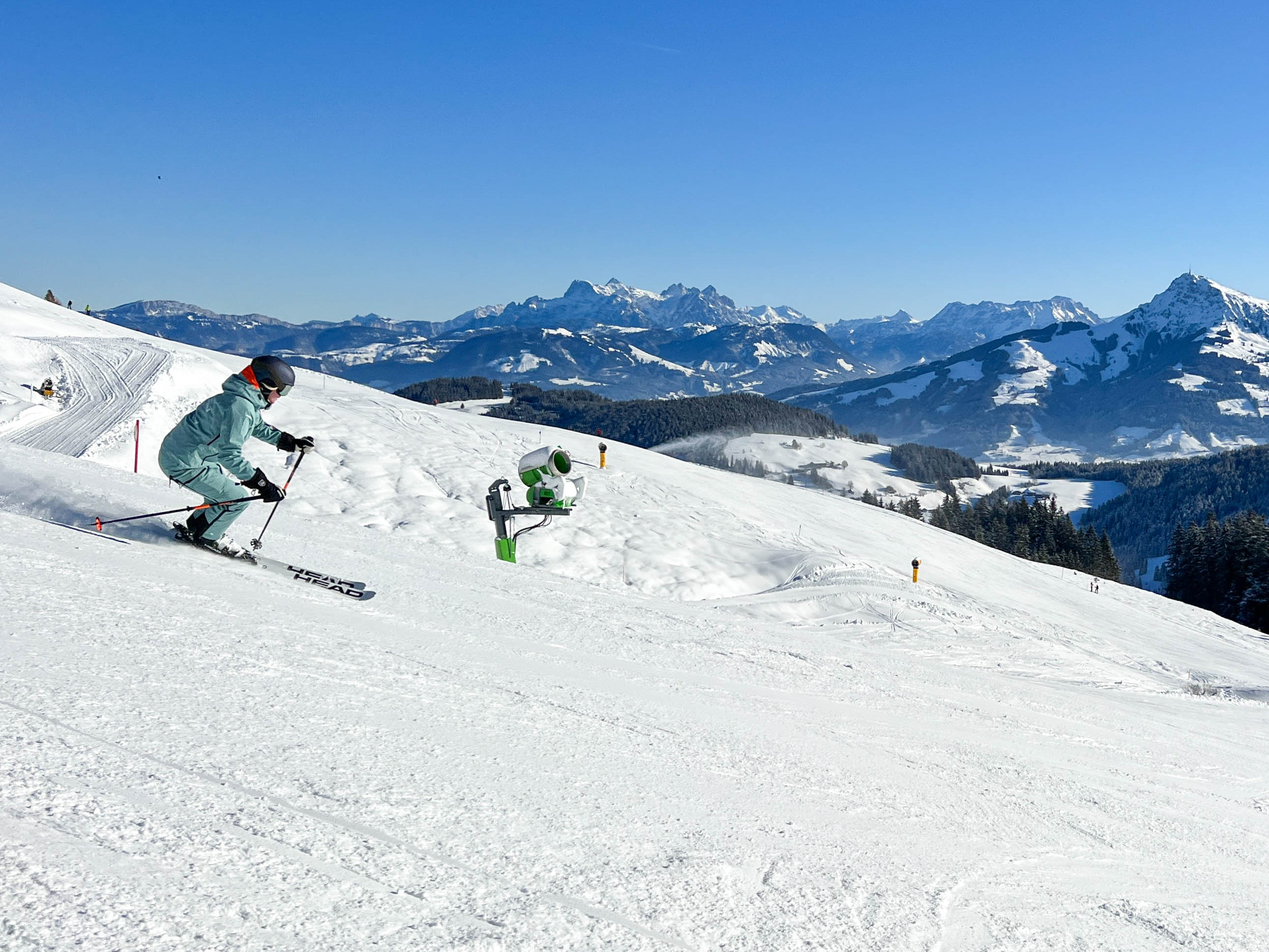

Mystified by the array of choices presented to you when all you want to do is just get a pair of skis so you can enjoy your ski holiday? In this article we've made a general outline of how to pick your hire skis based on height, weight and ability level. Please note, this article is intended as a quick overview of what to look for, not a comprehensive review of everything you need to consider when hiring skis. Insurance, etc. are not covered in this article.
What kind of skier are you?
Skis are designed to distribute your body weight and transfer power from your legs into the ski. So, the first thing to consider when choosing your skis is body weight. While the length of the ski will usually correspond to your height, people who weigh more or less than average for their height will need to choose longer or shorter skis, respectively. Aside from this, the different lengths and styles of skis provide distinct advantages for different skier profiles:
Beginners
As a rule, beginner skis should be on the shorter side, coming up to your chin if you hold them upright in front of you. Beginner skis are flexible and have a short sidecut, making it easier to turn.
Intermediates
Intermediate skiers should look for somewhat longer skis that reach between the chin and nose. Skis for intermediate skiers tend to be stiffer than beginner skis and have a longer sidecut, helping facilitate parallel turns while providing more stability at higher speeds.
Advanced
Advanced skiers will need to pick skis according to the type of terrain they plan on skiing. Advanced all-mountain skis will generally be longer, to provide extra stability when carving at high speeds, but if you plan on tackling moguls or powder then you'll need specialised skis.

Is it worth getting the most expensive category of hire skis?
Hire shops tend to divide skis into three categories, and the most expensive category is usually meant for expert skiers. These skis tend to be stiffer, to provide expert skiers with more stability and more control over the finer aspects of their style. A beginner skiing on expert skis will find it harder to turn, so it's not worth forking out more money for expensive hire skis if you're not going to be skiing at high speed on challenging terrain. Instead, look for softer skis with a shorter sidecut, which facilitates easy turning. On the other hand, nor should you hire skis that are below your ability level, as these won't give you the control you need for the terrain you'll be skiing.
Other types of skis
By the time you start looking for specialised skis it will probably be to invest in your own pair, but here's a taster of some of the other types of skis out there:
Racing skis:
Stiff and designed to provide stability at top speeds, even in icy conditions.
Freestyle skis:
Shorter, to allow manoeuvrability on jumps and superpipes, usually with twin tips so you can ski backwards.
Powder skis:
Extremely wide and designed with more rocker, allowing you to "float" on top of the snow.
For expert skiers, hire skis can be a fantastic opportunity to try out the latest models before investing in a pair.
In the hire shop
A good hire shop will be able to give you advice on what type of skis to choose according to your body type and ability level. Of course, not all hire shops are created the same, so it's nice to have an idea of what you're looking for before you go in. Once you get a pair of skis, look it over briefly to make sure they are properly waxed (you can tell they're not waxed if they look white/flaky/dry), with properly sharpened edges and no huge cracks or scratches on the bottom. Aside from providing a better skiing experience, starting out with skis in good condition also means you can avoid being charged for damage that wasn't your fault.
Setting your bindings
Bindings are designed to connect your foot to your skis, but only until you wipe out, at which point they should release so you don't break your leg by twisting it unnaturally to follow your ski. Beginner skiers will be falling all day, so their bindings should be set at a looser setting. In contrast, expert skiers need to be able to manoeuvre their skis through tricky bumps and turns, so they need stiffer bindings that allow them to wrench their skis this way and that without coming off every two seconds. While it's the hire shop's job to set your bindings at an appropriate level, you should always be honest about your height, weight, ability level, and preferred terrain, as this will affect how tight to set the bindings. If you're happy with the way those bindings end up performing, you may want to make a note of the setting for future.













